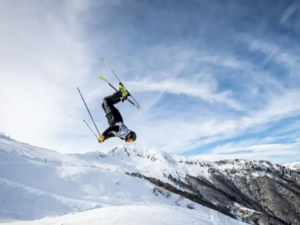Selecting the right size of ski poles is crucial for a comfortable and effective skiing experience. Ski poles aid in balance, propulsion, and maneuvering, and choosing the correct length is essential for optimizing these functions. Below is a comprehensive guide to help you determine the appropriate size of ski poles based on various factors.
1. Determine Your Skiing Style:
The first step in choosing ski poles is to consider your skiing style. Different styles of skiing may require poles of varying lengths. Here are some general guidelines:
Downhill Skiing: If you primarily engage in downhill skiing on groomed slopes, choose poles that allow your elbows to bend at a 90-degree angle when holding the poles upside down. This classic sizing ensures comfort and efficiency during downhill descents.
Freestyle or Park Skiing: For those who enjoy freestyle skiing or spending time in the terrain park, slightly shorter poles may be preferred. Shorter poles can offer more maneuverability for tricks and jumps.
Cross-Country Skiing: Cross-country skiing poles are typically longer than downhill poles. When selecting cross-country poles, the goal is to achieve a comfortable reach while gliding on flat terrain. Your arms should be able to extend comfortably without overreaching.
Backcountry Skiing: Backcountry skiing involves a mix of uphill climbs and downhill descents. Adjustable poles are popular in backcountry skiing, allowing skiers to lengthen the poles for uphill sections and shorten them for downhill skiing.
2. Use the 90-Degree Rule:
As a general rule of thumb for downhill skiing, stand in your ski boots and hold the poles upside down, gripping just beneath the baskets (the circular disks near the tips). Your elbows should form a 90-degree angle. This simple test helps ensure that the poles are of an appropriate length for your height.
3. Consider Your Height:
Height is a key factor in determining ski pole length. The following are general guidelines based on height ranges:
Under 5 feet (152 cm): Ski poles ranging from 36 to 40 inches (91 to 102 cm) may be suitable.
5 to 5.6 feet (152 to 168 cm): Poles between 40 and 46 inches (102 to 117 cm) are commonly used.
5.7 to 6.2 feet (170 to 188 cm): Ski poles in the range of 46 to 54 inches (117 to 137 cm) are typical.
Over 6.2 feet (188 cm): Consider poles longer than 54 inches (137 cm).
These are general guidelines, and personal preference may influence your final choice. Taller individuals or those with longer arms might find slightly longer poles comfortable, while shorter individuals may prefer slightly shorter poles.
4. Kids’ Ski Poles:
Children’s ski poles are sized differently. To ensure the right fit for a child, the poles should allow their arms to form a slightly acute angle, generally less than 90 degrees. Kids’ ski poles typically come in shorter lengths compared to adult poles.
5. Adjustable Poles:
If you participate in various skiing styles or if you’re unsure about a fixed pole length, consider adjustable poles. These poles allow you to change the length according to the terrain or personal preference. Adjustable poles are particularly popular among backcountry skiers.
6. Seek Professional Advice:
If you’re uncertain about which size to choose, don’t hesitate to seek advice from knowledgeable professionals at a ski shop. They can provide valuable insights based on your height, skiing style, and individual preferences.
In conclusion, selecting the right size of ski poles involves considering your skiing style, using the 90-degree rule, factoring in your height, and, if necessary, seeking professional advice. A well-chosen pair of ski poles contributes to a more enjoyable and efficient skiing experience, enhancing your balance and maneuverability on the slopes.
If you are looking for professional customized ski pole, click here.



